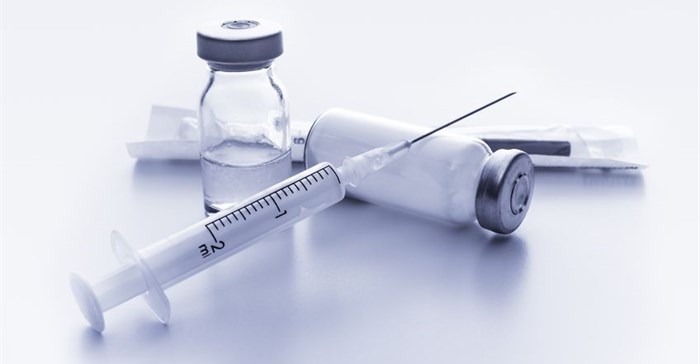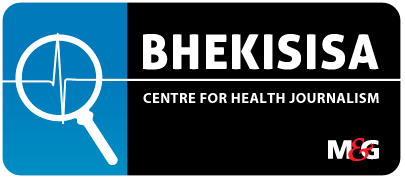Penicillin shortages as pharma companies eye newer, more lucrative drugs

Stella Ngubenkomo was 11 when she was diagnosed with a lifelong heart condition called rheumatic heart disease. The condition can start as a simple strep throat infection but, without treatment, it can damage the heart and eventually may lead to heart failure, according to the World Heart Federation.
“My joints used to be very painful and I would get tired easily. Then my mom took me to the hospital and we learnt about my disease. The doctor said I wouldn’t live long,” she recalls.
Ngubenkomo receives monthly benzathine penicillin G injections from her local clinic. It’s the only drug that prevents the progression of rheumatic heart disease, which affects her and almost 25 in every 1000 South African adults, according to 2015 research published in the International Journal of Cardiology.
But over the past two years, South Africa has experienced stockouts of the drug that has kept Ngubenkomo and others alive.
“At the start of 2015, we experienced shortages of benzathine penicillin G. We then switched to using ampicillin, but then we run out of ampicillin as well,” says Mark Sonderup, vice-chairman of the South African Medical Association. “There was a time when a simple form of penicillin was not available in the country.”
The world relies on a handful of suppliers
South Africa is just one of at least 18 countries, including the United States, France and Brazil, that have faced benzathine penicillin G shortages over the past three years, according to the World Health Organisation (WHO).
The medicine, one of the oldest forms of penicillin, costs between $0.20 and $2 globally, according to the international nonprofit organisation the Clinton Health Access Initiative. Benzathine penicillin G not only treats rheumatic heart disease but is also the only medicine that can prevent mother-to-child transmission of syphilis and treat the infection in babies who contract it, according to the US Centers for Disease Control (CDC).
Global shortages of the drug have been fuelled partly by an overreliance on a limited number of manufacturers: just four companies in the world produce the active ingredient needed to make benzathine penicillin G.
Three of these manufacturers are based in China: North China Pharmaceutical Group Semisyntech, CSPC Pharmaceutical Group, and Jiangxi Dongfeng Pharmaceutical Company. The fourth is Austria-based Sandoz.
Together these companies could deliver up to 600 tonnes of benzathine a year, but produce less than 20% of that because the drug “is off patent, offers little profit, and because demand data is extremely limited”, according to the WHO.
“Penicillin production is difficult,” says University of KwaZulu-Natal senior lecturer in pharmacology and consultant pharmacist Andy Gray. “This is a product with no alternatives, and you rely on a few huge global suppliers.”
When older drugs are “off patent” the medicines’ original producers are no longer the only ones that can manufacture them. In theory, this allows a wider range of generic drug makers to make the drugs, usually more cheaply, given the increased competition.
Dire straits, tough choices
But with few companies to supply the drug, during shortages countries may be forced to resort to penicillin manufacturers that have lost certificates of good manufacturing practices. This kind of accreditation, issued by the WHO or international or national regulatory authorities, is key to ensuring the quality and safety of drugs.
As a way of coping with the benzathine penicillin G shortages that started in 2015, South Africa sourced more than 242 000 vials of unregistered benzathine penicillin G from Semisyntech in 2016 through an emergency scheme. In extraordinary cases, such as in the case of stockouts or when specific patients may need it, South Africa’s drug regulator, the Medicines Control Council (MCC) allows for what’s called section 21 access to drugs not currently registered for use in South Africa.
Semisyntech’s manufacturing plant for the antibiotic has been banned from supplying European Union (EU) countries after it failed to adhere to EU manufacturing standards. Shyamli Munbodh is the MCC’s manager of section 21 procurement unit. He says the MCC only learned of this after emergency orders had been placed but said strict monitoring of any adverse events linked to the drug had been a prerequisite of its approval to import benzathine penicillin G from the Chinese drugmaker.
No adverse events have been reported, says Munbodh.
During a November 2014 visit to the Semisyntech manufacturing site, European inspectors found falsified documents and poor quality controls not only for pharmaceutical data but also for laboratory processes that could have put medicines produced there at risk of contamination, according to a report by the French National Agency for Medicines and Health Products Safety.
The French authority recommended that the company be barred from supplying penicillin to the EU. Eventually, Hong Kong, Ethiopia and Liberia also recalled vials of penicillin made with ingredients from the plant.
In March, after another EU inspection, the company received a certificate of good manufacturing practices — but this only allowed it to export veterinary medicines to EU countries.
Sourcing drugs from unaccredited companies is a dangerous gamble
“Medicines produced in noncompliant factories pose a risk to patients to the extent that the purity or effectiveness of the end product is compromised,” warns Natasha Hurley, campaigner manager from the London-based Changing Markets Foundation, which has investigated the supply chain of drug companies over recent years.
South Africa no longer procures benzathine penicillin G from Semisyntech but leftover stocks of Semisyntech-made penicillin remain in the country. They are not currently being used, according to Munbodh.
Medicine shortages could be fuelling rising rates of drug resistance
In South Africa, when benzathine penicillin G ran short in 2015, some doctors resorted to prescribing the medicine azithromycin to patients with rheumatic heart disease instead.
But when clinicians are forced to give substitute therapies to patients, they could be fuelling antibiotic resistance.
“When injectable penicillin is not available, tablet antibiotics such as azithromycin are sometimes used. For patients, this implies that tablets are equivalent to regular antibiotic injections. Unfortunately, this is not the case — tablet antibiotics are less effective and may have unintended effects on antimicrobial resistance,” says Rosemary Wyber, deputy director of Rheach, an international rheumatic heart disease advocacy organisation.
A bacterium called group A streptococcus is the bug responsible for strep throat, which can give rise to rheumatic heart disease if untreated. The CDC has already reported cases of azithromycin-resistant strains of group A streptococcus in the United States.
Similarly, a single shot of benzathine penicillin G is enough to kill syphilis in its early stages, but global shortages may be playing a part in some doctors’ decisions to substitute azithromycin for benzathine penicillin G in syphilis patients.
A 2016 study published in the journal Nature argues the use of azithromycin is associated with rising rates of drug-resistant syphilis. Drug-resistant strains of the bacterium have been found in several countries, such as Canada, China and the United States.
The WHO has declared antibiotic resistance a serious worldwide threat to public health and a 2016 report commissioned by the UK government estimated that 700 000 lives are lost to drug resistance each year.
Although new drug discoveries in the last half of the 20th century may have kept the human race ahead of some bacteria’s ability to mutate and develop drug resistance, that may not be the case today.
In 2015, Nature reported on the breakthrough discovery of the world’s first new class of antibiotics in nearly 30 years.
Fewer antibiotics are being developed because these drugs now offer lower margins than other medicines, such as those targeting of rare and chronic diseases. A 2011 study from London-based consultancy Office of Health Economics and financed by the pharmaceutical company GlaxoSmithKline estimated that the net present value — the relationship between the projected costs and revenues of a product — for new injectable antibiotics stood in the $100-millions. In contrast, the forecast for new drugs to treat musculoskeletal disorders, such as arthritis, was more than $1-billion.
Meanwhile, some older drugs, such as benzathine penicillin G, are increasingly in short supply as they offer drug makers little prospect of large profits. But ensuring access to these medicines remains crucial not only for patients but also for tackling the spread of resistance, argue experts.
“We need new antibiotics, but we also need to preserve the existing ones because they can save us right now,” says Céline Pulcini of the faculty of medicine at France’s Université de Lorraine. Pulcini co-ordinated a study published in 2017 in the Journal of Antimicrobial Agents on the availability of older antibiotics, such as those used to treat skin infections, pneumonia and conjunctivitis.
Pulcini and her team found that about 70% of the medicines they tracked were only available in up to half the 39 countries they monitored, largely in North America and Europe, mainly because of the high cost of registering them for use and a perceived lack of return on investment for companies.
Benzathine penicillin G was available in only 20 of the nations surveyed.
Pulcini argues new drugs should be pursued together with ensuring old medicines were available for patients. “There is a very strong focus on new drugs, but nothing much is said about existing ones. And that is basically because there is no much money in this market. The price is so low that nobody is interested.”
She adds: “We need new business models and incentives to have old antibiotics in the market, otherwise we will just lose these drugs. It must be a top priority for governments to solve this.”
Source: Bhekisisa Centre for Health Journalism

This article was originally published by Bhekisisa, the Mail & Guardian’s Centre for Health Journalism. To read more
health stories from across Africa, go to bhekisisa.org













